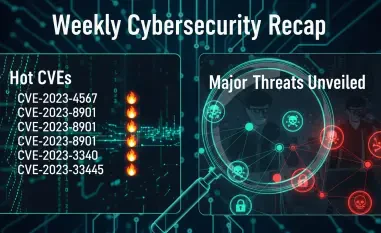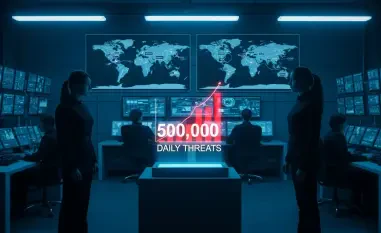Unveiling the ClickFix Challenge
In an era where digital interactions dominate daily life, a staggering number of security breaches stem from seemingly innocuous user actions, making cybersecurity a pressing concern. ClickFix attacks, also known as FileFix or fake CAPTCHA threats, have emerged as a deceptive force, tricking users into executing malicious code through browser-based interactions. These attacks exploit trust by presenting fake challenges or error prompts, often leading to severe data breaches in organizations worldwide. This review delves into the intricate workings of ClickFix as a cybersecurity threat, evaluating its mechanisms, impact, and the pressing need for innovative defenses. The goal is to dissect this evolving technology of deception and assess its implications for digital security landscapes.
Dissecting the ClickFix Threat Landscape
Core Concepts Behind ClickFix Attacks
ClickFix attacks represent a sophisticated twist on phishing tactics, manipulating users into copying malicious code from deceptive web pages and executing it on their devices. Unlike traditional phishing that relies on suspicious emails or links, these threats often manifest as fake CAPTCHAs or webpage error messages that prompt user interaction. This method capitalizes on the inherent trust users place in familiar browser interfaces, making it a stealthy and effective breach strategy.
The evolution of ClickFix places it within a broader spectrum of cyber threats that continuously adapt to bypass conventional security awareness. By leveraging web browser environments, attackers create scenarios where users unknowingly facilitate malware deployment. This shift in attack delivery underscores a critical gap in user training and highlights the urgency for updated cybersecurity protocols to address such novel vectors.
Mechanisms Driving ClickFix Effectiveness
Tactics of User Deception
At the heart of ClickFix attacks lies a calculated exploitation of user behavior through meticulously crafted lures. Attackers employ realistic interfaces that mimic legitimate web challenges, often distributed via search engine optimization poisoning or malvertising on trusted platforms. These methods sidestep the typical phishing red flags that users are trained to recognize, increasing the likelihood of successful deception.
The unfamiliar nature of these attack vectors adds another layer of complexity. Many users are unaware that copying text from a webpage could initiate a security breach, especially when the action is automated through JavaScript. This lack of suspicion, combined with polished attack designs, creates a fertile ground for attackers to exploit human error on a massive scale.
Strategies for Evading Detection
ClickFix threats employ advanced techniques to remain undetected by standard security tools, utilizing domain rotation and content obfuscation to avoid blocklists and scrutiny. By incorporating bot protection mechanisms, these attacks hinder automated analysis by web proxies or scanners, ensuring they reach their intended targets. Such strategies reveal a high level of sophistication in evading early-stage interception.
Non-email delivery channels further complicate detection efforts, as traditional email security layers are bypassed. Malvertising campaigns, for instance, allow attackers to target specific demographics or regions, tailoring their approach while minimizing exposure to security systems. This adaptability poses significant challenges for organizations reliant on conventional detection frameworks.
Limitations in Endpoint Defense
A critical concern with ClickFix attacks is the heavy dependence on endpoint detection and response systems as the last line of defense. Since these threats often lack overt file downloads or suspicious application connections, EDR tools may struggle to flag user-initiated code execution as malicious. Obfuscated commands exacerbate this issue, slipping past heuristic detection rules.
In environments with unmanaged devices or inconsistent EDR coverage, such as bring-your-own-device setups, the risk intensifies. Attackers continuously refine payloads to disable or evade endpoint solutions, exposing vulnerabilities in relying solely on this layer. This over-reliance underscores the need for earlier intervention points in the attack chain.
Emerging Patterns in ClickFix Methodologies
Recent trends indicate a rapid evolution in ClickFix attack strategies, with attackers demonstrating remarkable adaptability to counter existing defenses. Speculation points toward future methods like browser-contained execution, where malicious code operates entirely within browser sandboxes to evade endpoint detection. This potential shift signals a daunting challenge for current security architectures.
High-profile data breaches linked to ClickFix attacks have also surged, affecting sectors from healthcare to education. The increasing frequency of these incidents reflects a broader trend of attackers targeting sensitive industries with precision. Such developments necessitate a reevaluation of how threats are prioritized and addressed within organizational risk frameworks.
The adaptability of ClickFix methodologies suggests a trajectory of growing complexity over the coming years. As attackers refine their techniques to exploit emerging technologies or user behaviors, the cybersecurity community must anticipate these shifts. Staying ahead requires not only reactive measures but also predictive strategies to mitigate unforeseen attack paths.
Real-World Consequences and Industry Impact
ClickFix attacks have left a tangible mark on various industries, with notable breaches at organizations like Kettering Health and DaVita illustrating their destructive potential. These incidents often result in significant data loss, financial damage, and reputational harm, highlighting the stakes involved. Affected sectors are now grappling with the reality of threats that exploit user trust at a fundamental level.
Beyond immediate damages, these attacks expose systemic vulnerabilities in security postures, particularly in environments handling sensitive information. Healthcare providers, for instance, face heightened risks due to the critical nature of their data, making them prime targets for such deceptive tactics. Each breach serves as a stark reminder of the cascading effects on operational continuity and public trust.
The broader implications of these real-world impacts call for industry-wide collaboration to address ClickFix threats. Sharing intelligence on attack patterns and outcomes can help build a collective defense, reducing the likelihood of repeated successes by attackers. Such efforts are crucial for minimizing damage across vulnerable sectors.
Obstacles in Countering ClickFix Threats
Combating ClickFix attacks presents multifaceted challenges spanning technical, behavioral, and regulatory domains. Technologically, the rapid evolution of evasion tactics outpaces many existing security tools, rendering traditional solutions inadequate. Standard recommendations, like restricting system tools, fail to account for attackers’ use of alternative binaries essential for legitimate functions.
Behaviorally, the gap between user awareness and the nature of these threats remains a significant hurdle. Training programs often lag behind the latest attack methods, leaving employees ill-equipped to identify deceptive browser interactions. Bridging this gap requires a cultural shift in how cybersecurity education is approached and delivered within organizations.
Regulatory frameworks also struggle to keep pace with the dynamic threat landscape, often lacking specificity for emerging vectors like ClickFix. Developing effective policies demands a balance between enforcing robust security measures and avoiding overly restrictive controls that disrupt productivity. Ongoing efforts to refine browser-based detection offer hope, but widespread adoption and standardization remain elusive.
Prospects for Mitigating ClickFix Risks
Looking ahead, the trajectory of ClickFix attacks suggests an escalation in sophistication, potentially exploiting browser environments to an even greater extent. Addressing this evolution calls for advancements in cybersecurity defenses, particularly solutions that intercept threats at the browser level. Innovations like malicious copy-paste detection hold promise for disrupting attacks before they progress to endpoints.
The broader implications for organizational security involve rethinking defense-in-depth strategies to incorporate proactive measures. Integrating browser-based protections with existing endpoint and network solutions can create a more resilient barrier against deceptive threats. This holistic approach ensures multiple layers of defense, reducing the risk of a single point of failure.
Collaboration between technology providers, cybersecurity experts, and organizations will be vital in shaping effective countermeasures. As new tools emerge, their integration into security frameworks must prioritize user experience alongside protection, avoiding disruptions to workflow. Such balanced solutions are essential for sustainable defense against an ever-adapting threat like ClickFix.
Reflecting on the ClickFix Evaluation
This review of ClickFix cybersecurity threats paints a detailed picture of a deceptive and evolving challenge that tests the limits of traditional defenses. The analysis reveals how these attacks capitalize on user trust and sophisticated evasion tactics to bypass conventional security measures. Real-world impacts underscore the urgency of addressing this threat across industries.
Moving forward, actionable steps include prioritizing browser-based detection tools to intercept threats at their inception. Organizations are encouraged to enhance user training to cover novel attack vectors and foster a culture of vigilance. Exploring collaborative efforts to share threat intelligence promises to strengthen collective defenses against future iterations of ClickFix.
As the cybersecurity landscape continues to shift, investing in adaptive and innovative solutions emerges as a critical consideration. Building resilience against ClickFix requires anticipating attacker innovations and integrating multi-layered defenses. This proactive stance offers a pathway to safeguard digital environments from the deceptive power of such threats.













